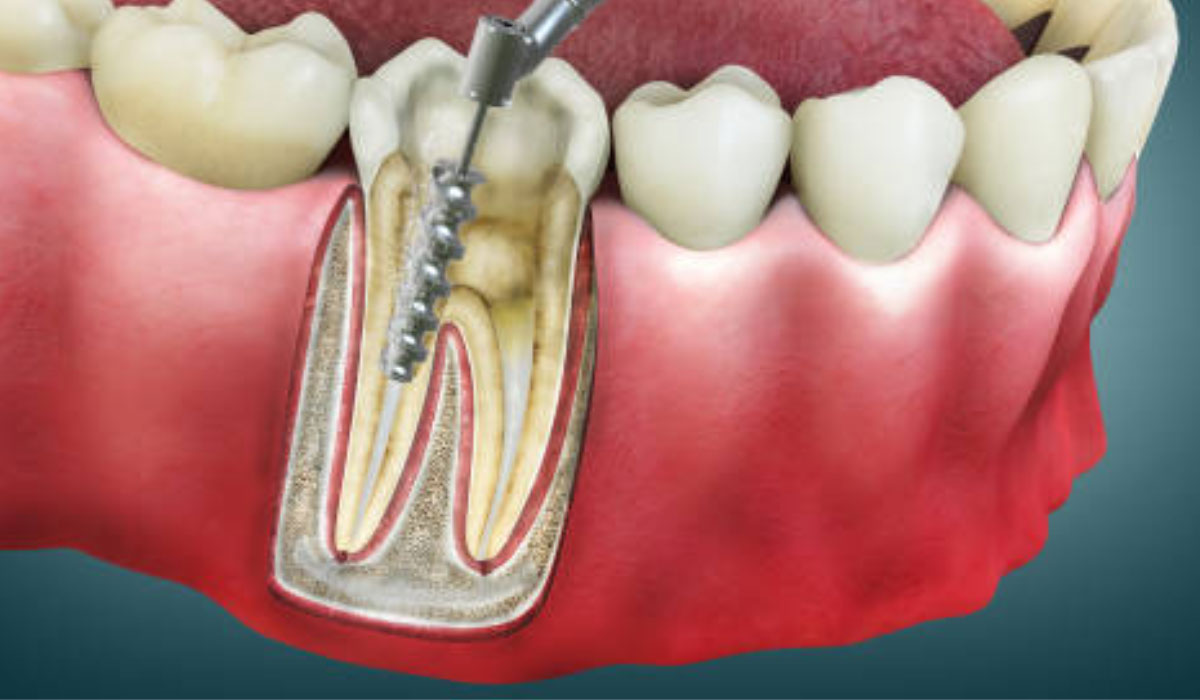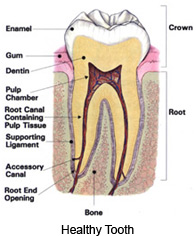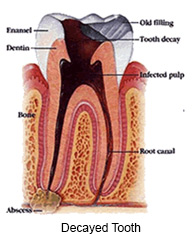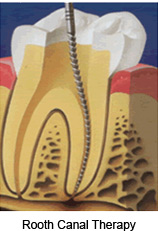Filling & Root Canal Therapy

Tooth Colored Restorations
Tooth Colored Restorations beautifully matched to your natural teeth
What is root canal therapy?
Root canal therapy is designed to correct disorders of the dental pulp -- the soft tissue inside the tooth that contains nerves, blood vessels, nutrients. Teeth with abscessed, injured or infected pulpal tissues require to have endodontic or root canal therapy to remove the necrotic or infected pulpal tissue. In ideal situation there is a 95 percnet chance of success in the outcome of root canal therapies.


What causes pulpal nerve damage?
The most common causes of pulpal nerve damage are:
- physical irritation - generally brought on by aggressive tooth decay (cavity) reaching down to the nerve or through deep fillings, which allows harmful bacteria to reach the nerve resulting in infection and decay
- trauma - a blow to a tooth or the jaw can cause damage to sensitive nerve tissue within the tooth.
What are the symptoms of pulpal nerve damage?
The following are the most common symptoms of pulpal nerve damage. However, each individual may experience symptoms differently. Symptoms may include:
- pain in the tooth when biting down
- tooth pain while chewing
- oversensitivity of the teeth with hot or cold drinks
- facial swelling.
Why is the Root Canal performed?
The pulp is the living tissue of the tooth with blood supply and nerve supply. Once the dental caries (decay ) involves the pulp, the pulp gets infected causing pain. The aim of the root canal treatment is to remove the infected pulp. This is done by removing the infected pulp with files in the pulp chamber and cleaning and shaping the root canals and sealing the canal with a filling material.


What does the root canal procedure involve?
Treatment begins with the initial removal of the tooth crown, or top, to allow access to the pulpal tissue. Once the affected pulpal tissue is exposed, the affected area is removed. The area surrounding and containing the pulpal tissue is carefully cleaned, enlarged, and shaped to provide a clean, bondable surface for filling with a permanent filler to prohibit any further infection and discomfort. After filling, a crown is fabricated to complete the rescue and restoration of the natural tooth. The procedure is generally spread over several visits to assure the infected pulp and associated bacteria have been adequately drained.
Post-Operative Care Following a Root Canal
Once the root canal therapy is completed, there will be changes to adapt to, including:
- brittleness - a pulp-less tooth is more brittle than a non-treated tooth and great care should be used to avoid fracture and chipping
- discoloration - a non-vital tooth may become discolored over time, which can be treated with bleaching. In most cases, the discoloration poses no threat to the health of the tooth.
- Crown or Cap - after a root canal therepy a crown is advised to avoid the fracture or chipping of teeth.

Call Us Today
+91 522 4004067, 8318280110

Quick Links
Help & Support
Useful Links
Working Hours
- Monday - Saturday : 10:00AM - 02:00PM
- Monday - Saturday : 04:00PM - 09:00PM
- Sunday : by appointment